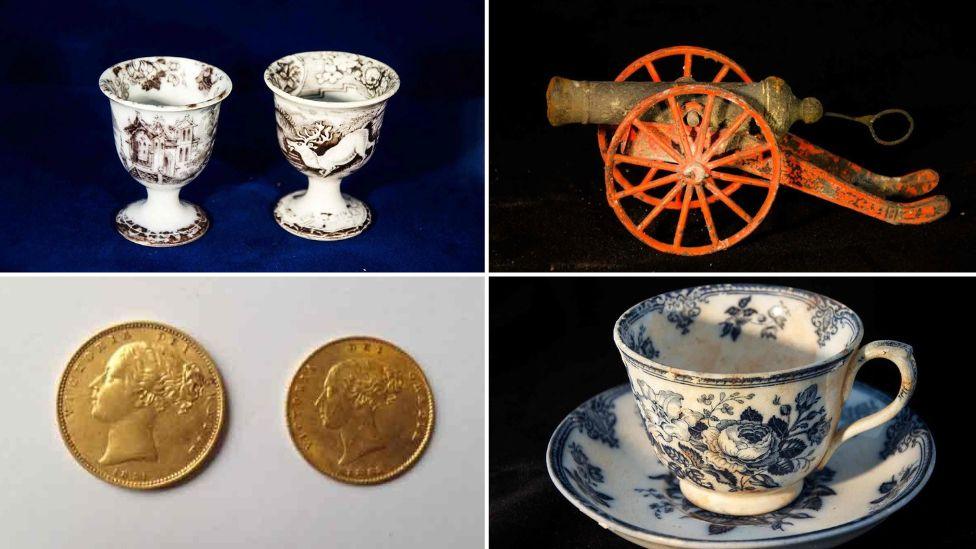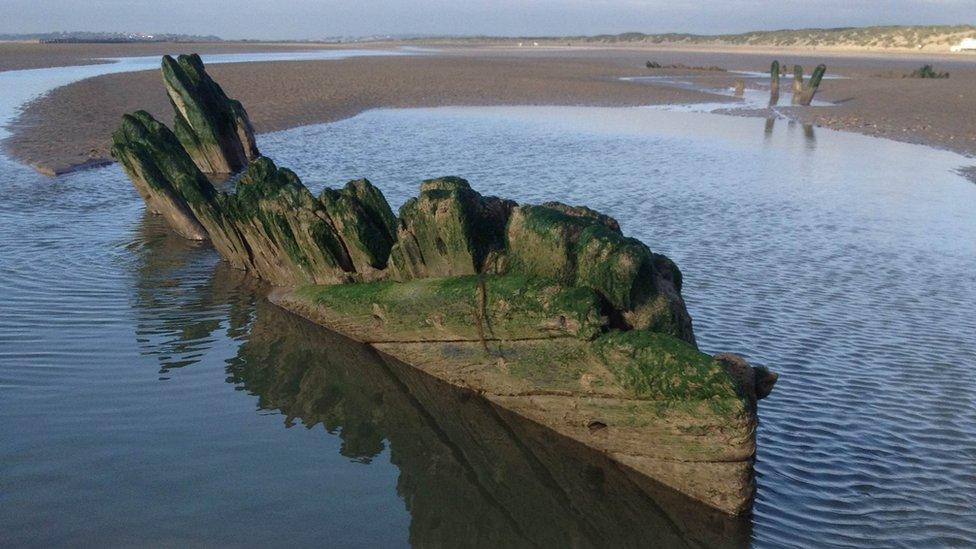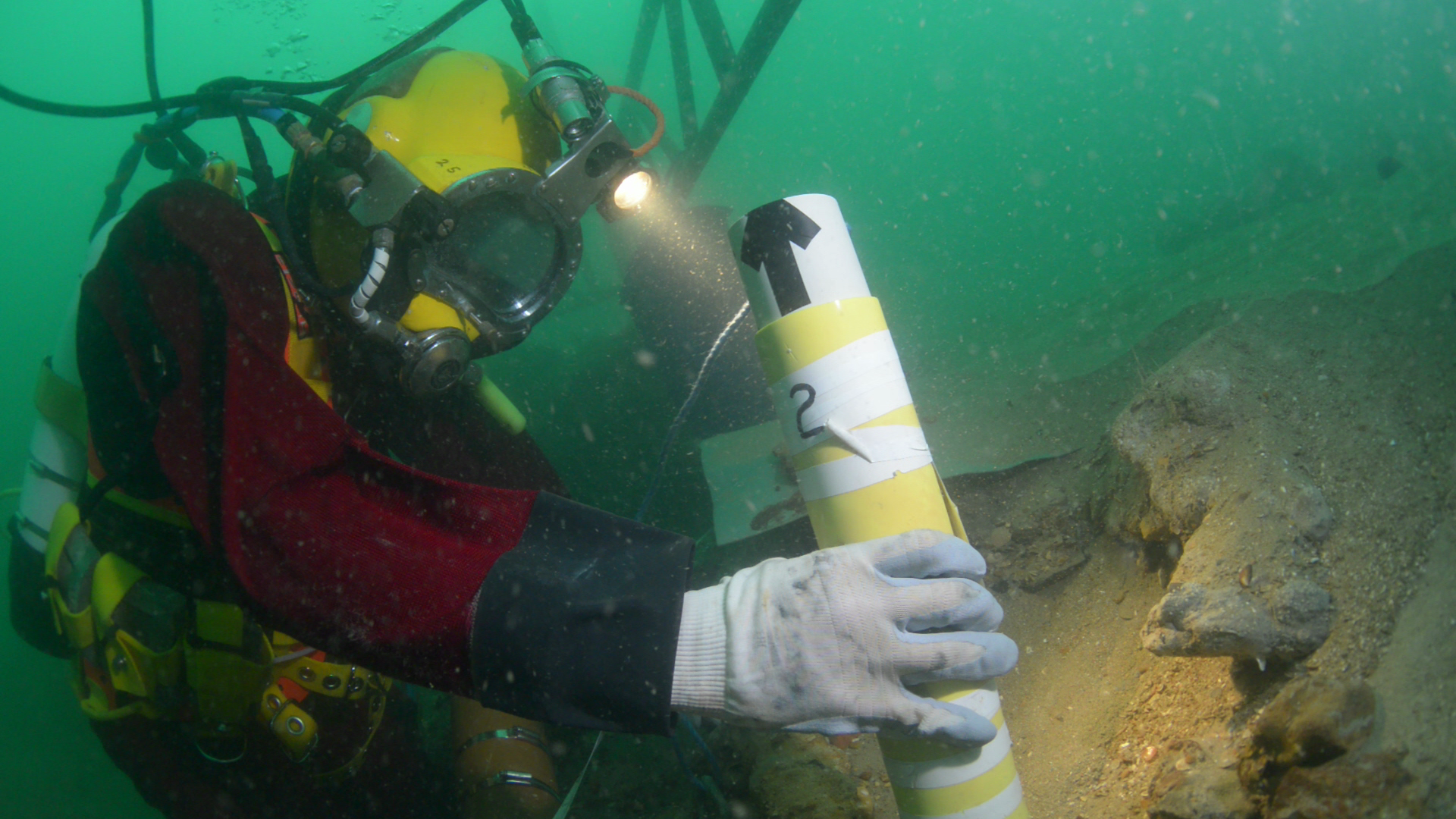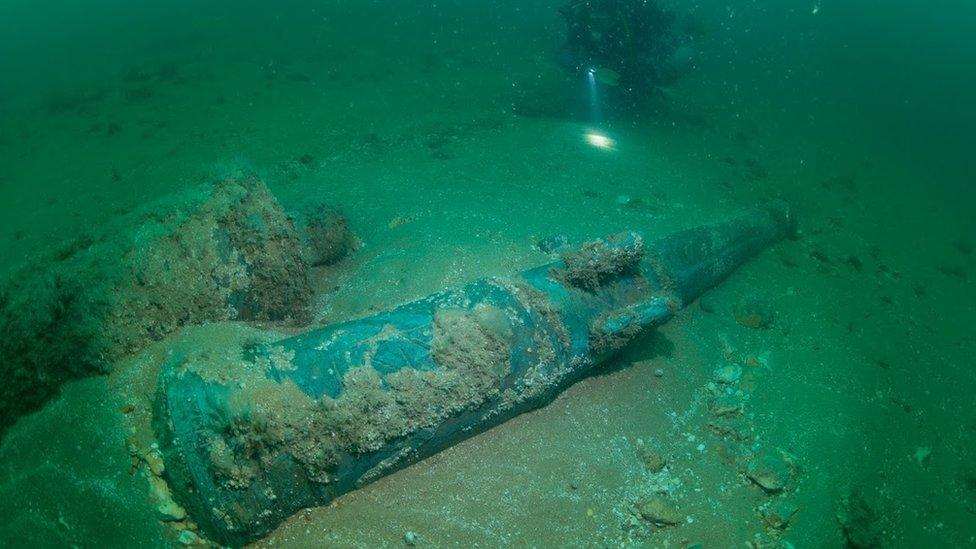Kent shipwreck carrying rare cargo wins protection
- Published

Ceramics discovered with the wreck of Josephine Willis, which sank off the coast of Kent in 1856
The wreck of a emigrant ship which sank off the coast of Kent 167 years ago has been granted protection.
The Josephine Willis was transporting British people to New Zealand, with a large cargo of ceramics on board.
The ship, which foundered four miles (6.4km) south of Folkestone harbour after a collision in 1856, lies in two parts on the seabed, 23 metres deep.
A marine archaeologist said the cargo shines a light on Victorian industry and trade, and the lives of emigrants.
The mid-19th Century ship was granted protection by the government on the advice of Historic England.
Some of the ceramics on board are still in their crates and several unknown patterns have been discovered on cups, plates and bowls which have no equivalents within museum collections, Historic England said.

A selection of artefacts found in the shipwreck
Duncan Wilson, Historic England chief executive, said the sinking was a "sad story" of ordinary people being lost to the sea in the search for a better life.
"The other side to this story is of the rare cargo on board, which gives us clues to help improve our knowledge of the Victorian export ceramics industry in the mid-19th Century," he said.
A total of 70 lives were lost, including Captain Edward Canney.
His descendant James Canney is conducting research into the construction of the ship and the people who chartered it.
"I am also learning more about the lives of the crew and passengers, both those lost at sea in the tragedy and those who survived and later made it to their new lives on the other side of the world," he said.
The wreck was identified by divers from Folkestone 501 diving club in 2018 and reported to Historic England via Wessex Archaeology.
Wessex Archaeology marine archaeologist Graham Scott said most of the ceramics on board were "ordinary, affordable, mass produced goods that most European settlers in New Zealand could at least aspire to own".
"However, being relatively plain they tended to be of little interest to collectors and are often absent from museum collections. So, these ceramics are both ordinary and special."

Follow BBC South East on Facebook, external, on Twitter, external, and on Instagram, external. Send your story ideas to southeasttoday@bbc.co.uk, external.
Related topics
- Published16 July 2018

- Published25 July 2018

- Published27 January 2023

- Published17 February 2022

- Published1 September 2017
